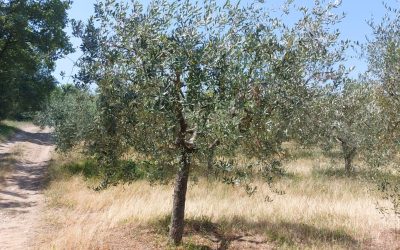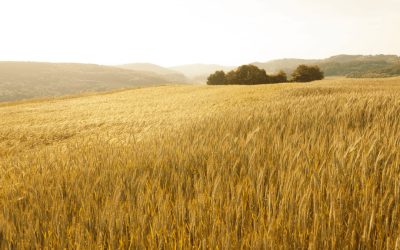In recent years, the world has witnessed the rapid evolution of cryptocurrencies, with Bitcoin and Ethereum drawing global attention. However, one of the main limitations of traditional cryptocurrencies is their high volatility: their value can change drastically within a short time, making them poorly suited as stable instruments of exchange or stores of value.
A possible solution to this problem could stem from a simple yet powerful idea: issuing a cryptocurrency backed by a real asset, such as agricultural land. This approach is inspired by the concept of stablecoins, but enhances it by tying it to a tangible, productive, and durable good.
What is a backed cryptocurrency?
A backed cryptocurrency (or “backed”) is a digital currency whose value is guaranteed by an underlying asset. In the case where agricultural land is chosen as the underlying asset, each unit of the cryptocurrency would be “covered” by a portion of real land, managed and assessed by certified entities.
For example: 1 crypto-token could correspond to the ownership (or the right to use/profit from) of 1 square meter of agricultural land.
Why Agricultural Land?
Agricultural land has several characteristics that make it attractive:
- It is a limited resource: land cannot be “printed” like money.
- It has intrinsic value: it can be cultivated and generate income, food, and raw materials.
- It is historically stable: in many economies, land tends to maintain or increase its value over the long term.
From an economic perspective, land is a fundamental productive factor (according to the classical theory of Adam Smith and David Ricardo), and Ricardo himself emphasized the role of land in the formation of value and rent.
Advantages for Investors and the Economic System
A cryptocurrency tied to agricultural land offers several clear benefits:
- Value stability: being linked to a solid and low-volatility asset, it reduces the risk of sharp fluctuations.
- Inflation protection: as a real asset, land tends to maintain its value even when traditional currency loses purchasing power.
- Global access to a local asset: thanks to blockchain, anyone could invest in agricultural land in another country, without purchasing it directly.
- Decentralized finance tied to the real economy: this creates a bridge between digital innovation and agricultural production.
Risks and Considerations
Naturally, there are some critical issues:
- Land valuation: who determines the value? How is it updated over time?
- Management of the underlying asset: who cultivates that land? With what returns?
- Regulation: land ownership and investment laws vary from country to country.
For this reason, the project should be managed with transparency, supported by independent third parties and strong governance, possibly based on DAOs (Decentralized Autonomous Organizations).
Conclusions
A cryptocurrency backed by agricultural land is not just a futuristic proposal: it represents a concrete way to bring the world of cryptocurrencies closer to the real economy. It could become a tool for financial inclusion, sustainable investment, and economic stability, echoing the thinking of classical economists like Ricardo, who believed that value stems from labor and land.
Such a project would require economic, technical, and legal expertise, but it could open a new era for digital finance: one in which cryptocurrencies are no longer just numbers on a screen, but instruments anchored to what truly feeds the world.



